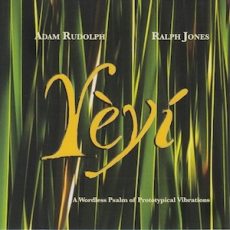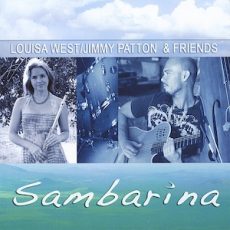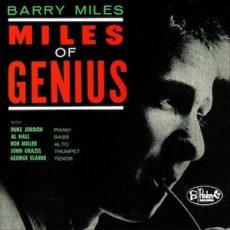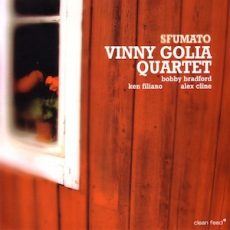
Daily Dose Of Jazz…
Adam Rudolph was born September 12, 1955 in Chicago, Illinois and grew up on the South Side among jazz and blues musicians. In 1988 he met Yusef Lateef, and the two would collaborate and perform together for the next 25 years.
In 1992 Rudolph helped found the band Adam Rudolph’s Moving Pictures, a group of improvisers He has been the artistic director of and composer for Hu: Vibrational with Hamid Drake, Vashti International Percussion Ensemble and Go: Organic Orchestra. He has performed as half of the Wildflowers Duo with Butoh dance innovator Oguri.
Rudolph has released several albums as leader and has also recorded with musicians Sam Rivers, Omar Sosa, Wadada Leo Smith, Pharoah Sanders, Bill Laswell, Herbie Hancock, Foday Musa Suso, and Shadowfax
Composer and percussionist Adam Rudolph continues performing in the post-bop and world fusion medium.
More Posts: bandleader,history,instrumental,jazz,music,percussion

Daily Dose Of Jazz…
Louisa West was born in Thomasville, Georgia on June 14, 1979 and began playing flute at the age of ten. She went on to receive a Bachelor of Music Performance from the University of Georgia and while studying there she performed in numerous ensembles including an orchestra conducted by Sammy Nestico. She studied privately with classical flutists Angela Jones-Reus, William Bennett, Mary Karen Clardy, and Mimi Stillman, as well as jazz flutists Nestor Torres and Holly Hofmann.
A winner of numerous competitions, after graduating from college in 2001, she relocated to southern California where she has been performing in the musical genres of world music, jazz, Latin jazz, and classical music. Playing extensively in the U.S, Canada and Mexico, Louisa has appeared onstage with touring acts such as Persian pop star Shakila, flutist Nestor Torres, and Brazilian singer Diogo Nogueira.
West recently attended California Brazil Camp, where she delved into the history and music of Brazil through workshops and performances by Brazilian jazz artists. This experience inspired her 2010 debut release with Jimmy Patton titled Sambarina.
Flutist Louisa West continues to perform, tour and record.
More Posts: bandleader,flute,history,instrumental,jazz

Daily Dose Of Jazz…
Barry Miles was born Barry Miles Silverlight on March 28, 1947 in Newark, New Jersey and grew up in North Plainfield, New Jersey. In 1956 he joined the musicians union at age nine as a child prodigy on drums, piano and vibraphone appearing with Miles Davis and John Coltrane among other talents of the day. He appeared live and on television shows including To Tell the Truth, Dick Van Dyke’s variety show, and The Andy Williams Show.
In 1961 at age fourteen he made his solo artist debut recording, “Miles of Genius”, as drummer and composer with sidemen Al Hall and Duke Jordan. Miles continued to perform with his own band in the early 1960s in which he composed the material that enabled up and coming talents such as Woody Shaw, Eddie Gómez and Robin Kenyatta to display their talents.
While a student at Princeton University he concentrated on his piano playing, recording a live album in 1966 entitled Barry Miles Presents His Syncretic Compositions. He followed in 1969 with the eponymously titled album, Barry Miles, incorporating electric instruments.
The Seventies saw him recruiting his brother Terry Silverlight on drums along with guitarists Pat Martino and John Abercrombie to record his White Heat album, which is regarded as one of the pioneering fusion jazz recordings. For the next decade, Miles recorded several albums in which he developed the principle of fusing styles together in jazz.
In the late 1970s and throughout the 1980s, Barry went on to work as Roberta Flack’s musical director for a stint that lasted fifteen years. During that time he composed, produced and recorded songs that Flack recorded in the film Bustin’ Loose, and on her album Oasis. He established a long-lasting relationship with Al Di Meola as his performing, recording and co-producing keyboardist.
He wrote the instruction book, “Twelve Themes With Improvisations”, and is currently out of print. In 2013, he released Home and Away, Volume One, his first album as a leader in 27 years. Pianist, record producer and author Barry Miles continues to perform, record and produce.
More Posts: author,bandleader,history,instrumental,jazz,music,piano,record producer

Daily Dose Of Jazz…
Vinny Golia was born March 1, 1946 in the Bronx, New York City. As a composer he fuses the rich heritage of jazz, contemporary classical music and world music. As a bandleader, he has presented his music in Europe, Canada, Mexico, Japan, Australia, New Zealand and the United States. His ensembles vary in size and instrumentation.
He founded the jazz record label Nine Winds in 1977 and has won numerous awards as a composer. In 1982 he created the ongoing 50-piece Vinny Golia Large Ensemble to perform his compositions for chamber orchestra and jazz ensembles.
A multi-woodwind performer, Vinny’s recordings have been consistently picked by critics and readers of music journals for their yearly “ten best” lists on JazzTimes, Cadence Magazine, DownBeat, LA Weekly, Jazziz and the Jazz Journalists Association honored him with a Lifetime Achievement Award.
Golia has been a featured performer with Anthony Braxton, Henry Grimes, Joëlle Léandre, Wadada Leo Smith, Horace Tapscott, John Zorn, Tim Berne, George E. Lewis, the Rova Saxophone Quartet, Patti Smith, Eugene Chadbourne, John Bergamo, George Gruntz, Lydia Lunch, and the Los Angeles Philharmonic Orchestra among numerous others.
Most recently, Golia has performed and toured with his sextet which features some of the new voices in the Los Angeles free-improv scene. Saxophonist and composer Vinny Golia, who also plays flute, English horn, clarinet, bassoon, tárogató, continues to expand and discover new avenues of exploration in his music.

Daily Dose Of Jazz…
Trilok Gurtu was born October 30, 1951 to Hindu Brahmin parents in Mumbai, India. His mother was a famous classical vocalist who encouraged him to learn to play the tabla. He attended Don Bosco High School in Mumbai and he received formal training in percussion from Shah Abdul Karim.
Gurtu began playing a western drum kit in the 1970s, and developed an interest in jazz. Not understanding overdubbing he learned multiple parts which most musicians would have never attempted. In the 1970s, he played with Charlie Mariano, John Tchicai, Terje Rypdal, and Don Cherry.
In 1977 he recorded Apo-Calypso, an album by the German ethnic fusion band Embryo. His mother also sang on that record, and later joined him on his first solo CD, Usfret. The 1980s saw Trilok playing with Swiss drummer Charly Antolini and with John McLaughlin in McLaughlin’s trio. He joined Oregon and played on three of their records. In the early 1990s, he resumed his career as a solo artist and a bandleader.
By the end of the decade he was a member of Tabla Beat Science, collaborated with the Arkè String Quartet in 2007, and in 2012 with the electronic folk duo Hari & Sukhmani. He has worked with Terje Rypdal, Gary Moore, John McLaughlin, Jan Garbarek, Joe Zawinul, Michel Bisceglia, Bill Laswell, Maria João & Mário Laginha, Stefano Bollani and Robert Miles.
Drummer, percussionist, tabla player and composer Trilok Gurtu continues to compose, perform and record.
More Posts: composer,drums,history,instrumental,jazz,music,percussion,tabla




